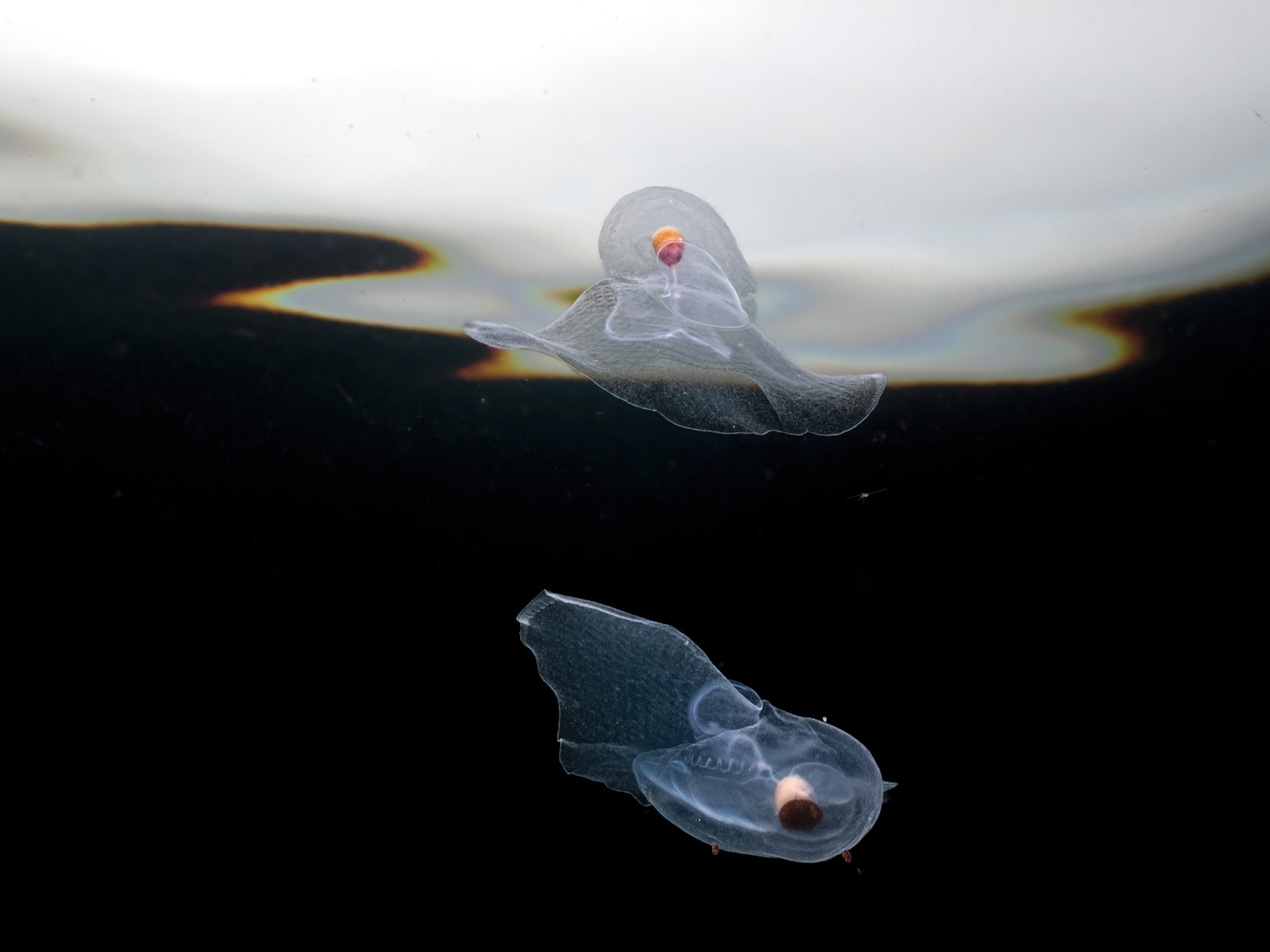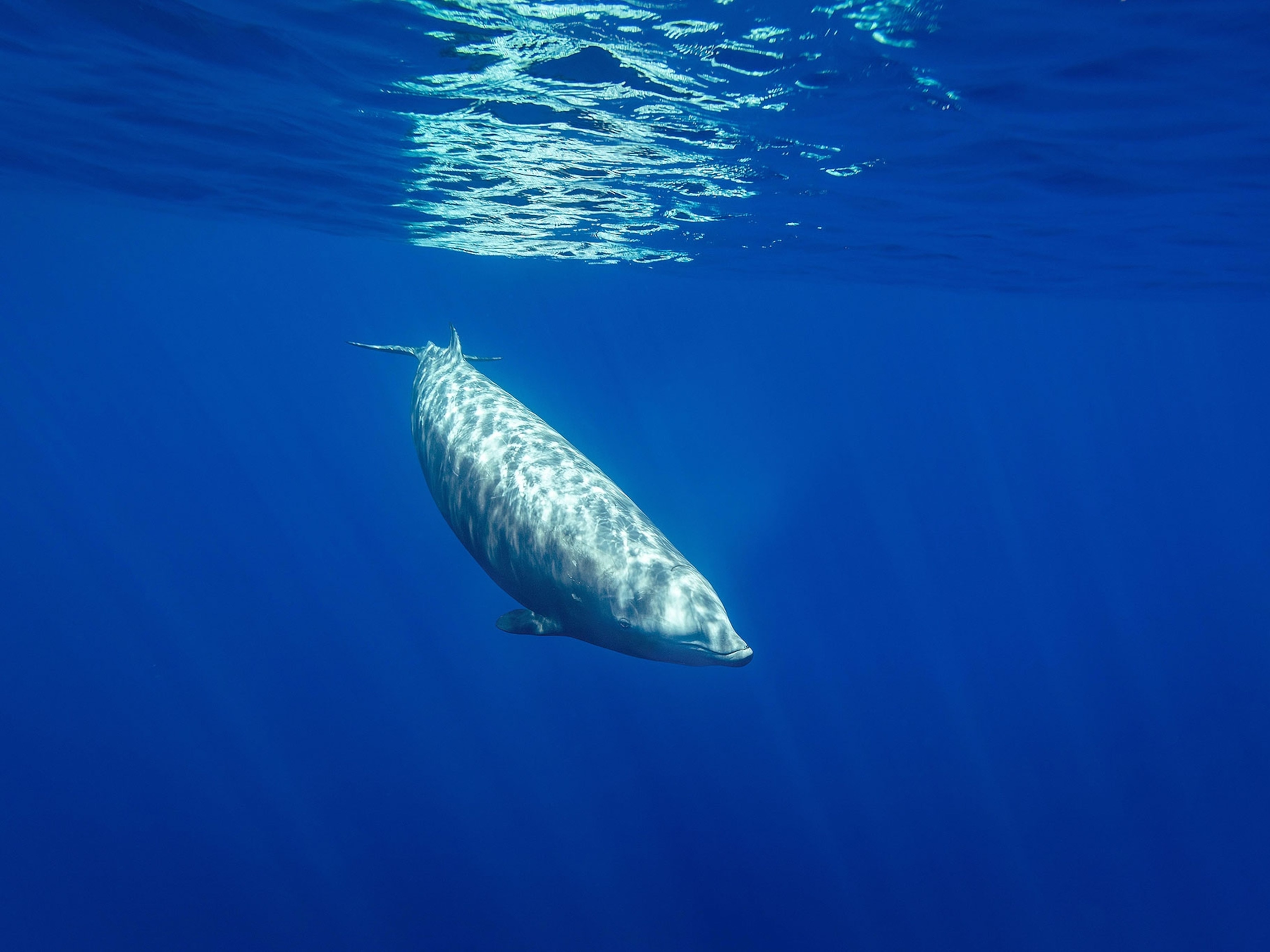Deep-Sea Predators Revealed in 30 Years of Footage
By reviewing underwater videos taken since the late 1980s, scientists were able to see who's eating whom in the deep sea.
Of all Earth's major ecosystems, the deep sea is one of the least understood—even though it is the largest. But a new comprehensive study that looked at 30 years of video footage from remotely operated underwater vehicles (ROVs) is helping researchers piece together a more accurate map of who is eating whom underwater.
Previous research to understand deep-sea food webs has relied on what Anela Choy, a marine researcher at the Monterey Bay Aquarium Research Institute (MBARI), calls "old fashioned methods."
"Like looking into guts," she said.
In addition to dissecting the stomach contents of marine animals, scientists have also previously studied food webs by looking at naturally-occurring biochemical tracers such as stable isotopes and fatty acids. This helps them match marine predators to their most likely prey items.
(Mystery Solved: How Do Dolphins Swim So Fast?)
These methods provide one way for scientists to understand deep sea food webs, but the role of gelatinous animals as predators and as prey can be tricky to fully represent. Gelatinous sea animals are mainly made out of water and are quickly digested by prey or can be easily damaged during collection.
So instead, Choy and a team of researchers from MBARI looked through the 30 years of video footage the institute has collected. (See the ghostly fish that lives a mile below sea.)
Unlike other marine creatures, jellies don't flee from the light and sound of ROVs. This allows scientists to directly observe how and what they were preying on. When watching more translucent creatures, they were even able to pear directly into the animals' stomachs.
"It took a horrendous amount of time," said Choy, but by watching videos of jellyfish predation, they were able to see how critical jellyfish species are for deep-sea food webs. Some species, they found, feed on as many as 22 different types of other marine organisms, making them a much more integral part of the food web than previously thought.
These findings were recently published in the journal Proceedings of the Royal Society B.
A More Complete Map
"I like to think of each one as an individual story," said Steven Haddock, one of the researchers involved with the study. In other words, each predator-prey relationship they observed added to the researchers' understanding of the deep sea. (See photos of deep-sea creatures.)
Of the interactions that stood out to him, Haddock notes an octopus that seemed to feed on just jellyfish. Video shows how it grabbed its prey by fully wrapping it in its arms.
The team also found footage of jellyfish attempting to prey on squid, and squid trying to prey on fish much bigger than them. It illuminated how active life underwater is, even when it's rarely seen.
Better understanding deep-sea food webs is important for conservation, say both Choy and Haddock.
And while the deep sea is remote and little understood by people, it's still capable of feeling the effects of pollution. One study, published in February of last year, found the deepest place on Earth had "extraordinary" pollution levels.
(Take our deep-sea quiz to see how much you know about Earth's most mysterious region.)
"I think of food webs as a map," says Choy. "You can't have whales in the ocean if it's not for the tiny plants that grow on the surface of the water, and you can't have big fish if it weren't for these collections of deep-sea animals feeding on one another."
"Imagine trying to conserve tuna if you don't know what they're feeding on," said Haddock. Both researchers hope their work can be applied to future conservation efforts.
Correction: This article has been updated to clarify other methods of studying deep-sea food webs.










